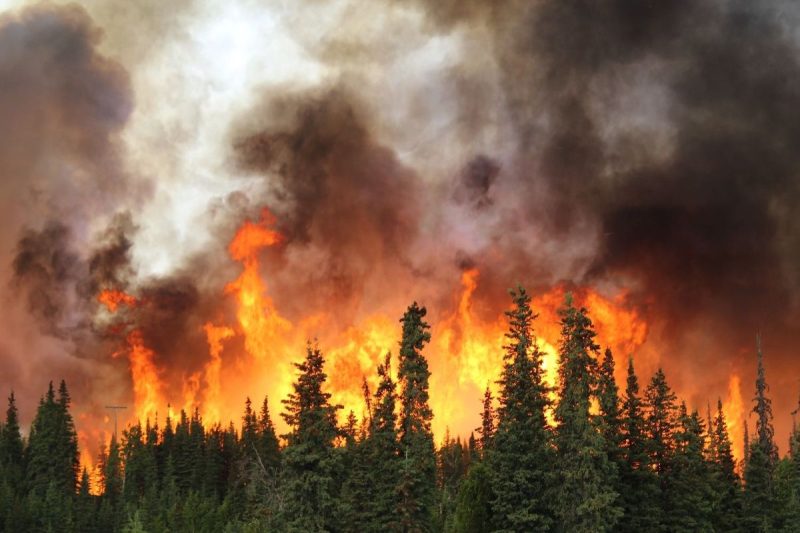Canadian wildfires are impacting mining companies in various areas, disrupting their activities.
Explorers and producing companies operating in BC, Québec and Newfoundland and Labrador and are among those that have been affected during this year’s wildfire season, with activity starting as early as May.
In BC, Osisko Development (TSXV:ODV,NYSE:ODV) suspended non-essential activities at its Cariboo gold project on July 22 following an evacuation order. The order was lifted on July 26, and Osisko was able to resume work immediately.
Also on July 22, Independence Gold (TSXV:IGO,OTCQB:IEGCF) evacuated its 3Ts gold-silver project in BC. The BC Wildfire Service issued an evacuation notice on July 21, as the fire was deemed ‘out of control,’ at an estimated 51 hectares.
CEO Randy Turner said exploration will resume when it is safe, following guidance from the BC Wildfire Service.
Across the country, Rio Tinto (ASX:RIO,NYSE:RIO,LSE:RIO) initiated a coordinated shutdown at Iron Ore Company of Canada (IOC) in response to an evacuation order from the Newfoundland and Labrador government.
The news was reported by Reuters on July 15, with a spokesperson for Rio Tinto confirming there had been no injuries or damage to infrastructure; they also said operations would resume once deemed safe by authorities.
IOC is a joint venture between Rio Tinto, Mitsubishi (TSE:8058) and Labrador Iron Ore Royalty Income Corporation. Last year, it produced 16.48 million metric tons of iron ore across five operational pits, according to company estimates.
Reuters also notes that Champion Iron (TSX:CIA,OTC Pink:CHPRF) temporarily shut down its Bloom Lake mine in Québec due to wildfire activity. The company implemented emergency response protocols, evacuated its workforce and took preventive measures to protect high-risk facilities. It announced a gradual return to work two days later.
‘Zombie fires’ may be fueling this year’s activity
Devastating wildfires ravaged various parts of Canada in 2023, starting at the beginning of March and continuing to November. The season was the worst for wildfires on record in terms of damage and proximity.
By September of last year, the Canadian government had reported over 6,132 fires burning through 16.5 million hectares of land by early September. Just like this year, producers and exploration companies in the mining industry were forced to implement emergency protocols, especially those operating in the Northern Québec region.
The reignition of ‘zombie fires,’ a popularized term referring to fires persisting throughout the winter from last year’s phenomenon, is being looked at as the possible cause for this year’s blazing onslaught.
Securities Disclosure: I, Giann Liguid, hold no direct investment interest in any company mentioned in this article.

